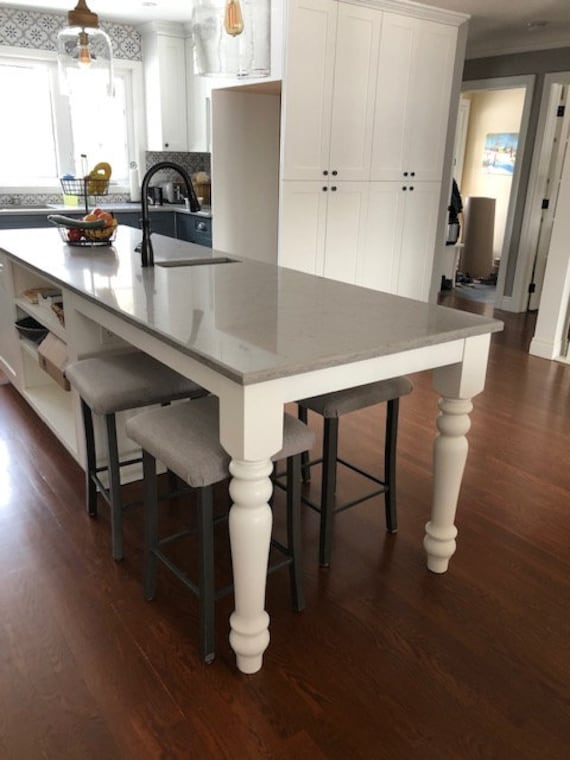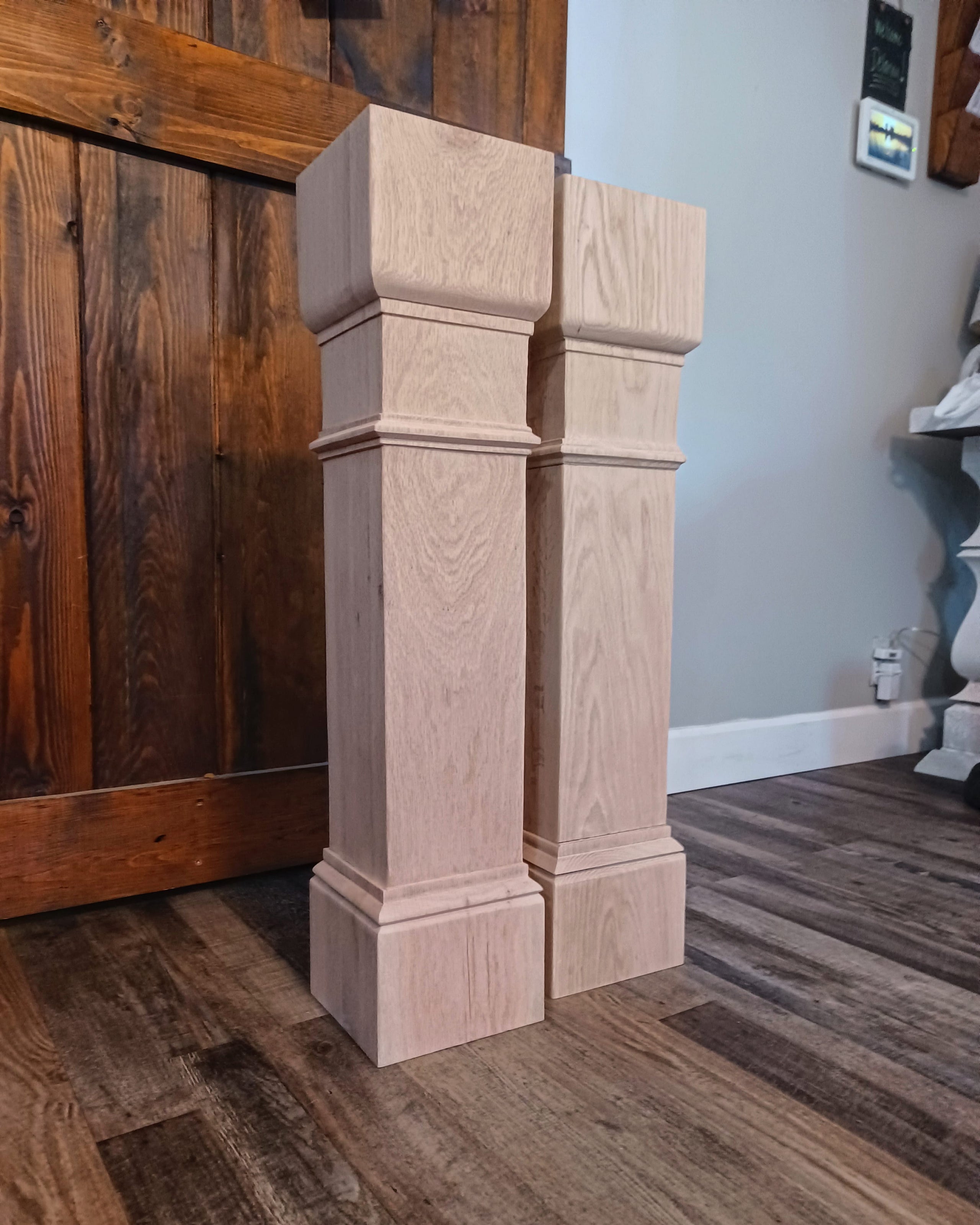Transform Any Type Of Kitchen Room with Beautiful Legs For Kitchen Island Choices
Transform Any Type Of Kitchen Room with Beautiful Legs For Kitchen Island Choices
Blog Article
Crucial Variables to Take Into Consideration When Picking Legs For Kitchen Area Island
Choosing the suitable legs for a kitchen island entails a mindful evaluation of multiple factors that can significantly affect both performance and aesthetic allure. Amongst these, the option of material plays a crucial function in guaranteeing resilience, while the layout needs to match the existing decor. Considerations such as elevation and weight support are crucial for stability and convenience. As we check out these elements, it comes to be clear that each decision can have far-reaching ramifications for the overall cooking area experience. What nuances should be taken into consideration in each of these categories to attain the optimal equilibrium?
Product Options
When selecting legs for a kitchen area island, recognizing the various product alternatives is important for accomplishing both visual appeal and structural honesty (Legs For Kitchen Island). The selection of material considerably affects not just the durability of the island however additionally its total design and performance
Timber is a preferred choice, providing warmth and adaptability. Strong woods, such as oak or maple, provide strength and can be stained or painted to match the kitchen area decoration. Steel legs, usually made from stainless steel or wrought iron, contribute a modern and industrial feel while guaranteeing toughness and security. These products are immune to use and can sustain considerable weight, making them suitable for bigger islands.
Another option is crafted products, like MDF or plywood, which can be a lot more affordable while still providing a variety of finishes. They might not offer the same degree of stability as solid timber or metal. Legs For Kitchen Island. Lastly, products such as acrylic or glass can produce a contemporary appearance, though they might require added assistance to guarantee security.
Eventually, the selection of product for kitchen area island legs should straighten with the preferred functionality and the general theme of the cooking area.
Style and Layout

When thinking about design, the form and surface of the legs are important. Conical legs can supply a feeling of agility and sophistication, while thicker, a lot more durable legs can communicate stamina and stability. Furthermore, the finish-- be it painted, stained, or all-natural-- need to enhance the kitchen cabinetry and kitchen counter products to produce a unified look.
Moreover, the design of the legs can additionally mirror individual taste. Customized or decorative legs, such as those including detailed makings or distinct geometric shapes, can work as centerpieces, including character and personality to the cooking area. Eventually, the best choice will certainly not just enhance functionality yet likewise elevate the visual charm, making the kitchen island a standout attribute of the home.
Elevation Considerations
Selecting the ideal elevation for cooking area island legs is vital, as it straight affects both functionality and comfort. The conventional elevation for a cooking area island typically varies from 36 to 42 inches, straightening with typical countertop heights.

It is likewise vital to the original source make up customers' choices and heights. Tailoring the height can ensure a comfy experience for all relative, making the kitchen area island a more delightful and functional space.
Weight Assistance
Guaranteeing adequate weight assistance for kitchen island legs is crucial for both safety and capability. The kitchen island usually serves numerous functions, consisting of cooking, eating, and additional storage space, necessitating a robust assistance structure. When choosing legs, it is crucial to think about the total weight capability called for based on the island's meant usage and the materials that will be put on it.
The choice of material for the legs plays a substantial role in their weight-bearing abilities. Strong wood, metal, and sturdy compounds typically supply superior strength compared to lighter products. In addition, the design of the legs-- whether they browse around these guys are directly, tapered, or have a pedestal kind-- can affect their ability to distribute weight successfully throughout the framework.
Furthermore, the leg placement must be purposefully planned to enhance stability. Legs positioned at the edges or with a bigger base can much better sustain heavier loads. Always get in touch with the manufacturer's specifications concerning tons limitations to make certain that the legs can maintain the desired weight without endangering safety. In summary, selecting kitchen island legs with adequate weight support is important for producing a practical and risk-free culinary space.
Setup and Maintenance
Appropriate installation and upkeep of kitchen island legs are essential for guaranteeing long life and stability. This often includes securing the legs to the island base utilizing appropriate bolts, ensuring that the legs are level and straightened.
When mounted, regular upkeep is necessary to protect the honesty and appearance of the legs - Legs For Kitchen Island. For wood legs, routine cleaning with a moist cloth and application of appropriate timber polish can avoid dampness damage and preserve their coating. Steel legs may need a mild cleaning service to get rid of grease and grime, complied with by a completely dry cloth to stop corrosion formation
Furthermore, evaluate the legs routinely for indications of wear or damage, such as fractures or loosened joints. Tightening up screws Click Here or screws as required can likewise extend the life-span of the legs. By sticking to these installment and upkeep techniques, home owners can ensure that their kitchen island remains sturdy and visually appealing for years to come.
Conclusion

Visual comprehensibility is paramount in choosing the style and style of legs for a cooking area island, as these components greatly influence the general atmosphere of the area. Conical legs can supply a feeling of agility and style, while thicker, more robust legs can convey strength and stability.Choosing the suitable height for kitchen area island legs is important, as it straight affects both performance and convenience. In summary, choosing kitchen area island legs with sufficient weight support is vital for producing a risk-free and practical culinary space.
In conclusion, selecting legs for a kitchen island necessitates mindful factor to consider of numerous aspects, including material options, design, elevation, weight support, and installation.
Report this page